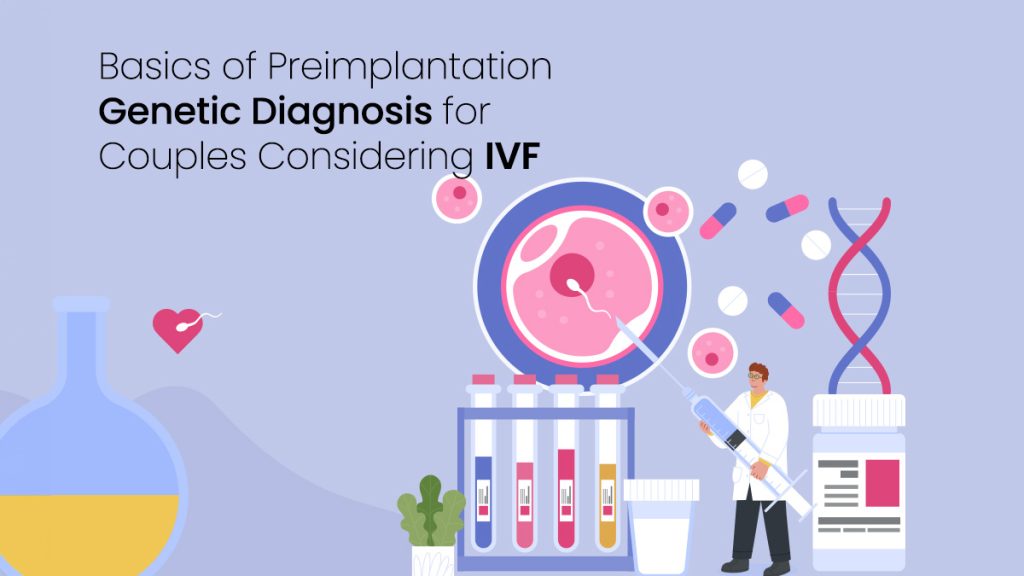Are you and your partner considering IVF as a pathway to parenthood? If so, you might be curious about preimplantation genetic testing (PGT). This advanced technique, used alongside IVF, can help screen embryos for genetic disorders before implantation. Understanding PGT can be a game changer for couples who carry certain hereditary conditions or have experienced recurrent miscarriages. This blog offers insights into preimplantation genetic testing.
What is Preimplantation Genetic Testing?
Preimplantation genetic testing, or PGT, is a procedure used to identify genetic abnormalities in embryos right before they are implanted in the uterus during an IVF cycle. It involves extracting cells from the embryos and testing them for specific genetic disorders. By identifying these abnormalities early, PGT allows only healthy embryos to be selected for implantation. This process reduces the risk of transmitting genetic disorders to the child, making it a critical tool for many couples.
The PGT Process: Step by Step
The PGT process begins with a standard IVF cycle:
- Ovarian Stimulation and Egg Retrieval: The woman’s ovaries are stimulated to produce multiple number of eggs, which are surgically retrieved.
- Fertilization: The eggs are fertilized with sperm in a laboratory, creating embryos.
- Embryo Development: The embryos are cultured for a few days until they reach a specific developmental stage, usually the blastocyst stage.
- Embryo Biopsy: A small number of cells are carefully extracted from each embryo. This procedure, known as an embryo biopsy, does not harm the embryos’ development.
- Genetic Testing: The extracted cells undergo genetic testing in a laboratory to detect any specific genetic disorders.
- Embryo Selection: Only embryos free from the screened genetic conditions are selected for implantation based on the genetic testing results.
- Embryo Transfer: A selected embryo is transferred into the uterus, where it is implanted and can develop into a pregnancy.
The timing of PGT within the IVF process is crucial. The genetic testing happens between the embryo biopsy and embryo transfer, seamlessly integrating into the IVF cycle.
Types of Preimplantation Genetic Testing
Preimplantation Genetic Testing (PGT) encompasses various types that target different genetic issues. The primary types include PGT-A, PGT-M, and PGT-SR.
PGT-A (Preimplantation Genetic Testing for Aneuploidies):
PGT-A is used to screen embryos for aneuploidies, which are abnormalities in the number of chromosomes. Aneuploidies can lead to conditions such as Down syndrome, Turner syndrome, and Edwards syndrome. By detecting these abnormalities, PGT-A helps select embryos with the correct number of chromosomes, increasing the chances of a successful pregnancy and reducing the risk of miscarriage.
PGT-M (Preimplantation Genetic Testing for Monogenic Disorders):
PGT-M is designed to detect specific single-gene disorders in embryos. These are hereditary conditions caused by mutations in a single gene. Examples include cystic fibrosis, sickle cell anaemia, and Huntington’s disease. PGT-M allows couples with a known risk of passing on these genetic disorders to ensure their embryos do not carry the defective genes.
PGT-SR (Preimplantation Genetic Testing for Structural Rearrangements): PGT-SR focuses on identifying structural chromosomal rearrangements, such as translocations, inversions, and deletions. These rearrangements can cause embryos to have unbalanced chromosomes, leading to miscarriage or congenital disabilities. PGT-SR helps select embryos with balanced chromosomal structures, improving the chances of a healthy pregnancy.
Why Choose PGT?
Couples choose preimplantation genetic testing for several reasons:
Reduced Risk of Genetic Disorders:
PGT can screen for various genetic conditions, such as cystic fibrosis, Down syndrome, and BRCA mutations. This reduces the likelihood of passing these disorders on to the child.
Increased Chances of Pregnancy Success:
By ensuring that only healthy embryos are implanted, the chances of a successful pregnancy can be increased.
Planning for a Healthier Future:
PGT allows couples to plan for a future where their children are free from known hereditary conditions, giving them peace of mind and a healthier outlook.
Who Should Consider PGT?
Preimplantation genetic testing is not necessary for every couple undergoing IVF. It is particularly beneficial for:
- Couples with a Known History of Genetic Disorders: Couples who carry genetic mutations that could be passed on to their children, such as cystic fibrosis, Tay-Sachs disease, or sickle cell anaemia, can benefit from PGT.
- Parents of Advanced Maternal Age: Women over the age of 35 are at a higher risk of having embryos with chromosomal abnormalities, making PGT-A a useful tool to select healthy embryos.
- Those with Recurrent Miscarriages: Couples who have experienced multiple miscarriages due to genetic abnormalities can use PGT to identify viable embryos, reducing the risk of further miscarriages.
- Individuals with a Family History of Chromosomal Rearrangements: Families with known chromosomal rearrangements, such as translocations or inversions, can use PGT-SR to ensure balanced chromosomal structures in embryos.
- Couples with Unexplained Infertility: Sometimes, PGT can help identify issues at the genetic level that might not be apparent through other tests, aiding in the selection of healthy embryos.
- Couples Undergoing IVF after Multiple Failed Attempts: For those who have had several unsuccessful IVF cycles, PGT can help identify the healthiest embryos, improving the chances of implantation and a successful pregnancy.
Preparing for PGT
Preparation for PGT involves several key steps:
- Consulting with Genetic Counselors: Couples should have detailed discussions with genetic counsellors to understand their specific risks and the potential benefits of PGT.
- Understanding Risks and Benefits: It is crucial to fully comprehend the implications of the PGT process, including the emotional and financial aspects.
- Emotional and Financial Preparation: The PGT process can be stressful and costly. Couples should be prepared for both the potential outcomes and the financial implications.
Conclusion
Preimplantation genetic testing offers a remarkable way for couples to increase their chances of having a healthy child. By understanding the PGT process, its benefits, and who it can help, couples considering or undergoing IVF can make informed decisions about their fertility journey.

